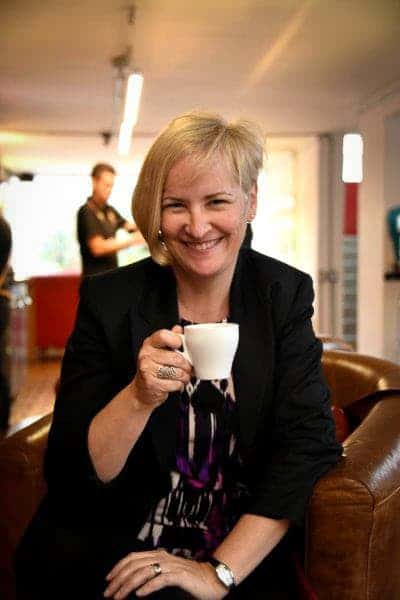Does Cold Brew Have More Caffeine?
You’re a caffeine-conscious kind of person. You know that caffeine affects your body, and you want to monitor how much you’re receiving in your daily dose of coffee.
That’s why, as you sip on your cold brew, you ask yourself: “Does cold brew have more caffeine?” Out of all the coffee drinks, does it pack the biggest caffeine punch?

How Much Caffeine Is In Cold Brew?
Calculating how much caffeine is in cold brew coffee is actually a deep subject. There are no cold hard facts. Although coffee brewing is a science, it depends on many variables.
We’ll get into those variables during this article.
But for now, you just want a number. So we’ll give you a number: 160.
On average, 12 ounces of cold brew coffee will give you about 160 mg of caffeine.
But depending on how it’s brewed, that same 12-ounce serving cup of cold brew can provide as much as 450 mg of caffeine!
How much caffeine is tucked away in your cup of cold brew also varies depending on the brand you drink.
Let’s take a look at how many milligrams of caffeine you get in a 12-ounce serving size from these coffee shops:
- A Starbucks cold brew has 153 mg
- La Colombe cold brew has 240 mg
- Dunkin’ Donuts cold brew has 190 mg
- STOK cold brew has 95 mg of caffeine
- Stumptown cold brew has about 334 mg
Those caffeine numbers are per 12 ounces of cold brew. Keep in mind that your bottle or cup of cold brew coffee might be larger and have several servings. Check the label to calculate the caffeine levels.
For instance, you might think that the STOK cold brew has a minimal amount of caffeine, and you can chug down a few of them.
But keep in mind that those 48-ounce bottles of cold brew have four servings, which adds up to 380 mg of caffeine.
According to the FDA, that almost hits the safe caffeine consumption level for a whole day. No wonder some people get the jitters from their cold brew.
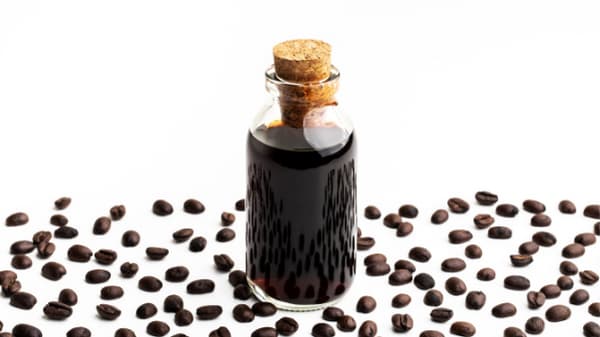
Why Does Cold Brew Coffee Contain More Caffeine?
As with all brewed coffee, how much caffeine you actually get in a cup or bottle depends on many variables.
What’s the coffee species? Robusta coffee has significantly more caffeine than Arabica.
How long was the coffee brewed? The longer the brewing time, the more caffeine you’ll extract. Each brew method requires different brewing times, and some result in a higher amount of caffeine. An example is French Press coffee, which has more caffeine due to a longer brewing time.
How much coffee did you use? Obviously, the more coffee you use, the more caffeine you’ll get. A cold brew concentrate ratio may go as high as 1:1.
How fine was the coffee ground? A finer grind size will, in general, produce a cup with more caffeine due to higher extraction rates. Those finer particles of ground coffee extract more caffeine into the brew.
What’s the roast level? Lighter roasts have slightly more caffeine.
Now you understand the variables, but what do they mean in real brewing life?
A light roast Robusta coffee that’s been finely ground and then brewed in a French Press will give you a higher caffeine dose than a darker roast Arabica brewed in a V60.
(We won’t talk about the probable flavors in that cup from the French Press, though. It wasn’t a recommendation, just a hypothetical situation).
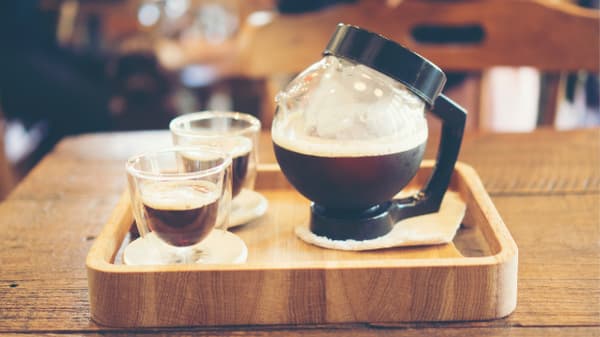
Is Cold Brew Stronger?
Your cup of cold brew coffee might seem stronger – or weaker – when compared to a hot brew.
That depends on the coffee to water ratio. When making cold brew, many people prefer a cold brew concentrate. A concentrated cold brew is easier to store in the refrigerator and can be used later for a wide variety of drinks – and even cooking.
That cold brew concentrate has a high coffee to water ratio, and it packs a lot of caffeine into each serving. However, a cold brew concentrate tastes quite strong. Most people will cut that strength with creamers, ice, or water.
To make cold brew, you steep coarse coffee grinds in cold water for anywhere from 12-24 hours. That long cold brewing time extracts quite a bit of caffeine.
Let’s compare how much caffeine is in each of the most common ways to brew hot coffee. We’ll look at a shot of espresso, a regular brewed coffee, and a pour-over.
Related Read: Cold Brew Coffee Makers
Espresso
Espresso is like the dark knight of coffee – black, powerful, and fast. Espressos taste strong, and no doubt that’s why most people say that an espresso has more caffeine than drip coffee.
If you’re looking for a sizable caffeine hit in just one drink, though, you might look elsewhere.
An average shot of espresso only contains about 64 mg of caffeine. That’s a third of the caffeine that you’ll generally find in regular brewed coffee.
Why so little caffeine?
A shot of espresso is brewed with about 6-8 grams of coffee grinds per shot (12-16 for 2 shots).
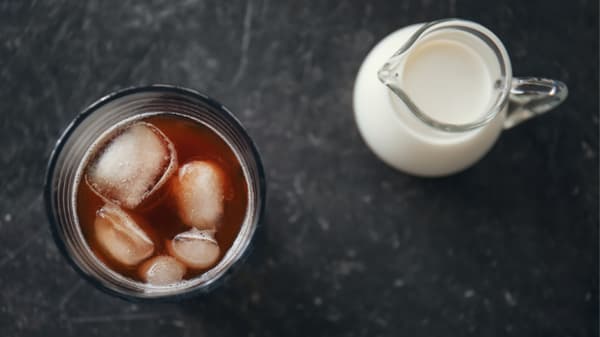
Those 6 grams of coffee mean you’re starting out with a lot less coffee than goes into a large cup of drip or pour-over coffee.
That same level of caffeine holds true for drinks based on espresso, such as a latte, cappuccino, or macchiato. As long as these drinks are made with just one shot of espresso, they’ll have the same amount of caffeine as that shot.
A fancy coffee drink may actually have a lower caffeine level because they’re spiffed up with cream, syrup, and whipped topping.
In what scenario would espressos rack up caffeine content? If you start adding more shots to your drink.
Or you down one espresso after another. In those cases, you’ll begin to notice the caffeine hiding inside those tiny espresso cups.
Regular Brewed Coffee
Regular brewed coffee has a more delicate flavor than espresso or cold brew. So you might think a hot brew coffee would be a bit lighter in caffeine.
Think again. Hot brewed coffee has about 190 mg of caffeine in each 12-ounce serving.
Yes, hot brew coffee often can have more caffeine per serving than cold brew. Why?
Hot brewed coffee is generally made with 15-17 grams of coffee grounds per serving.
Compare that with the grinds that go into a shot of espresso, and you can see why there’s more caffeine in a hot coffee. Also, the higher brewing temperature extracts more.
However, check with your favorite coffee shop because the amount will change according to all the variables we’ve listed.
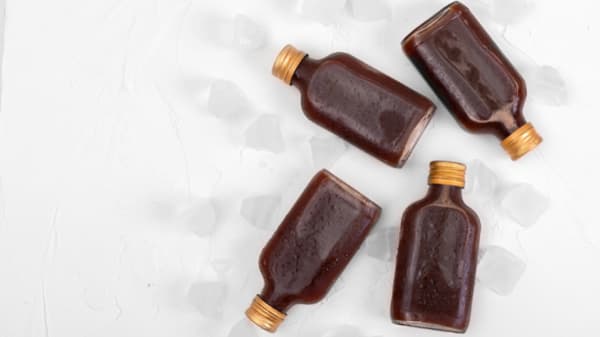
Pour Over
The even more delicate flavors of a pour-over could make you feel you’re getting even less caffeine.
But what’s the truth?
A general coffee to water ratio for a pour-over brew method may be from 1:15 or 1:17, and the water temperature will be high. That results in a caffeine content similar to drip coffee.
How a pour-over is brewed will affect how much caffeine is extracted, as we already discussed.
Wrapping Up
In conclusion, does cold brew have more caffeine? Yes and no.
A cold brew concentrate can have a very high caffeine content.
If you keep those extreme energy drinks out of the picture, though, hot brewed coffees generally contain more caffeine per serving than cold brew.
So if your cold brew coffee gives you the jitters, check your coffee shop or brand choice for the caffeine content. Keep in mind that safe levels hover around 400 mg a day.

